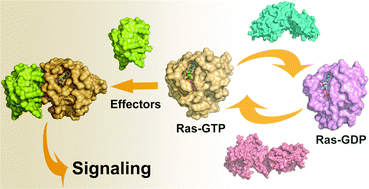Drugging Ras GTPase: a comprehensive mechanistic and signaling structural view
Abstract
Ras proteins are small GTPases, cycling between inactive GDP-bound and active GTP-bound states. Through these switches they regulate signaling that controls cell growth and proliferation. Activating Ras mutations are associated with approximately 30% of human cancers, which are frequently resistant to standard therapies. Over the past few years, structural biology and in silico drug design, coupled with improved screening technology, led to a handful of promising inhibitors, raising the possibility of drugging Ras proteins. At the same time, the invariable emergence of drug resistance argues for the critical importance of additionally honing in on signaling pathways which are likely to be involved. Here we overview current advances in Ras structural knowledge, including the conformational dynamic of full-length Ras in solution and at the membrane, therapeutic inhibition of Ras activity by targeting its active site, allosteric sites, and Ras–effector protein–protein interfaces, Ras dimers, the K-Ras4B/calmodulin/PI3Kα trimer, and targeting Ras with siRNA. To mitigate drug resistance, we propose signaling pathways that can be co-targeted along with Ras and explain why. These include pathways leading to the expression (or activation) of YAP1 and c-Myc. We postulate that these and Ras signaling pathways, MAPK/ERK and PI3K/Akt/mTOR, act independently and in corresponding ways in cell cycle control. The structural data are instrumental in the discovery and development of Ras inhibitors for treating RAS-driven cancers. Together with the signaling blueprints through which drug resistance can evolve, this review provides a comprehensive and innovative master plan for tackling mutant Ras proteins.


 Please wait while we load your content...
Please wait while we load your content...